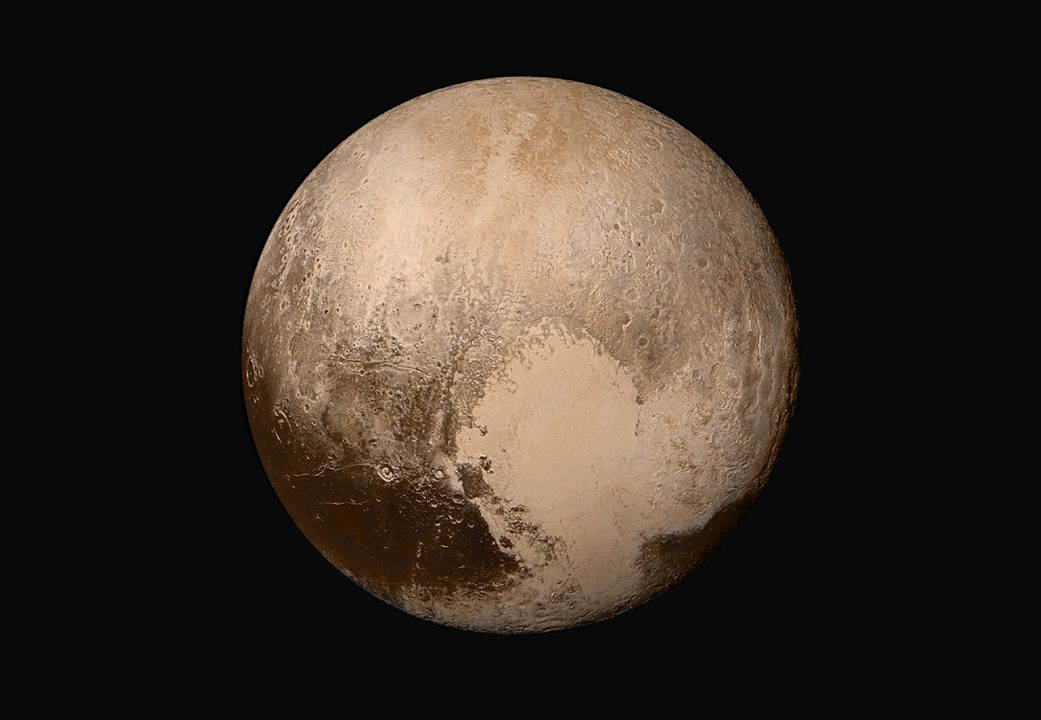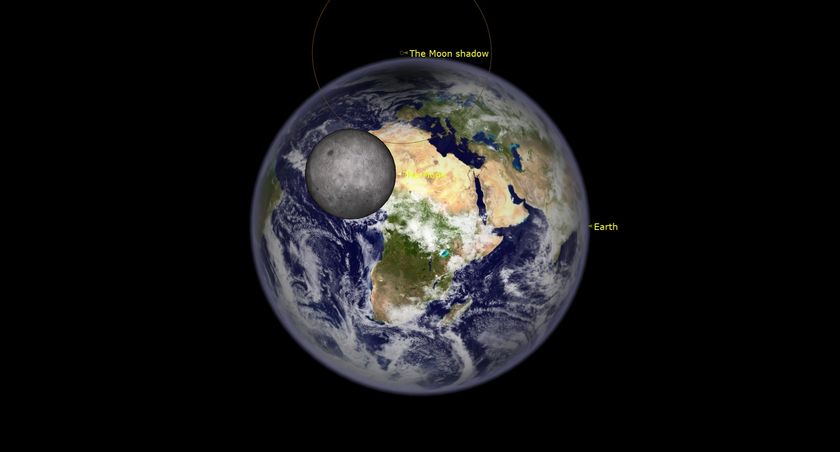Pluto's 'Heart' Hints at Deep, Underground Ocean

A new simulation of how Pluto got its "heart" suggests that the dwarf planet most likely has a deep ocean beneath its surface.
Scientists have long suspected that Pluto has liquid water hidden underground. When NASA's New Horizons mission first set sail to the outskirts of the solar system, scientists were already planning to investigate whether the dwarf planet harbors water.
When New Horizons flew past Pluto in July 2015 and beamed its observations back to Earth, scientists found evidence suggesting that Pluto had water at some point. However, they weren't sure whether Pluto's had an existing ocean, or if it had frozen solid over time.
In a new study, scientists have determined that Pluto's subsurface ocean probably does exist, and that liquid water beneath the dwarf planet's icy shell is at least 60 miles (100 kilometers) deep and about as salty as the Dead Sea on Earth. For perspective, the deepest part of Earth's ocean is about 7 miles (11 km) deep, and Earth is about 150 times the size of Pluto.
However, many details about this possible ocean remain elusive.
"Thermal models of Pluto's interior and tectonic evidence found on the surface suggest that an ocean may exist, but it's not easy to infer its size or anything else about it," Brandon Johnson, lead author of the study and an assistant professor at Brown University's Department of Earth, Environmental and Planetary Sciences, said in a statement. "We've been able to put some constraints on its thickness and get some clues about [its] composition."
Johnson and his team discovered this information about Pluto's ocean by simulating the huge asteroid impact that left the flat, icy patch called Sputnik Planum on Pluto's surface, the western half of Pluto's famous heart-shaped feature. But first, they had to look at Charon, Pluto's largest moon. Charon and Pluto are both tidally locked, so they always face each other with the same sides. Sputnik Planum is found on the side of Pluto that constantly faces Charon, and that positioning implies that the area is what scientists call a "positive mass anomaly," meaning it contains more mass than the rest of Pluto's surface, on average.
Get the Space.com Newsletter
Breaking space news, the latest updates on rocket launches, skywatching events and more!
At first, this doesn't make any sense. The side of Pluto that faces Charon has a gigantic crater, which is "basically a hole in the ground," Johnson said. "You're taking a bunch of material and blasting it out, so you expect it to have negative mass anomaly. But that's not what we see with Sputnik Planum. That got people thinking about how you could get this positive mass anomaly."
That's where the asteroid simulation comes in. Brown and his team ran several simulations of a 200-km (125 miles) asteroid — the appropriate size for Sputnik Planum's 900-km (560 miles) basin — striking Pluto's icy surface with varying depths of liquid water underneath. During this major impact, the asteroid created a huge dent on Pluto. As the asteroid's remains bounced off of the surface, Pluto's interior bounced back, too.
During this rebound, Pluto's interior was pulled toward the surface at the impact site. If the moving material is dense enough, the weight could make up for the missing mass at the impact site and even out Pluto's weight distribution. So the side of the dwarf planet that appears as though it should be lighter actually weighs about the same as the other side. This process is called "isostatic compensation," and it appears to be the reason why Pluto's dented side is so heavy, the researchers said in the new study; after the asteroid took away Pluto's icy crust, denser water from Pluto's interior evened out the missing mass.
But what really tipped the scale for Pluto was the subsequent sea of nitrogen ice that filled Pluto's heart after the impact: The amount of nitrogen ice in Sputnik Planum doesn't weigh enough to explain the tidal locking alone, Johnson said.
"This scenario requires a liquid ocean," Johnson said. "What this tells us is that, if Sputnik Planum is indeed a positive mass anomaly — and it appears as though it is — this ocean layer of at least 100 kilometers has to be there. It's pretty amazing to me that you have this body so far out in the solar system that still may have liquid water."
The new work was detailed Sept. 19 in the journal Geophysical Research Letters.
Email Hanneke Weitering at hweitering@space.com or follow her @hannekescience. Follow us @Spacedotcom, Facebook and Google+. Original article on Space.com.
Join our Space Forums to keep talking space on the latest missions, night sky and more! And if you have a news tip, correction or comment, let us know at: community@space.com.

Hanneke Weitering is a multimedia journalist in the Pacific Northwest reporting on the future of aviation at FutureFlight.aero and Aviation International News and was previously the Editor for Spaceflight and Astronomy news here at Space.com. As an editor with over 10 years of experience in science journalism she has previously written for Scholastic Classroom Magazines, MedPage Today and The Joint Institute for Computational Sciences at Oak Ridge National Laboratory. After studying physics at the University of Tennessee in her hometown of Knoxville, she earned her graduate degree in Science, Health and Environmental Reporting (SHERP) from New York University. Hanneke joined the Space.com team in 2016 as a staff writer and producer, covering topics including spaceflight and astronomy. She currently lives in Seattle, home of the Space Needle, with her cat and two snakes. In her spare time, Hanneke enjoys exploring the Rocky Mountains, basking in nature and looking for dark skies to gaze at the cosmos.











